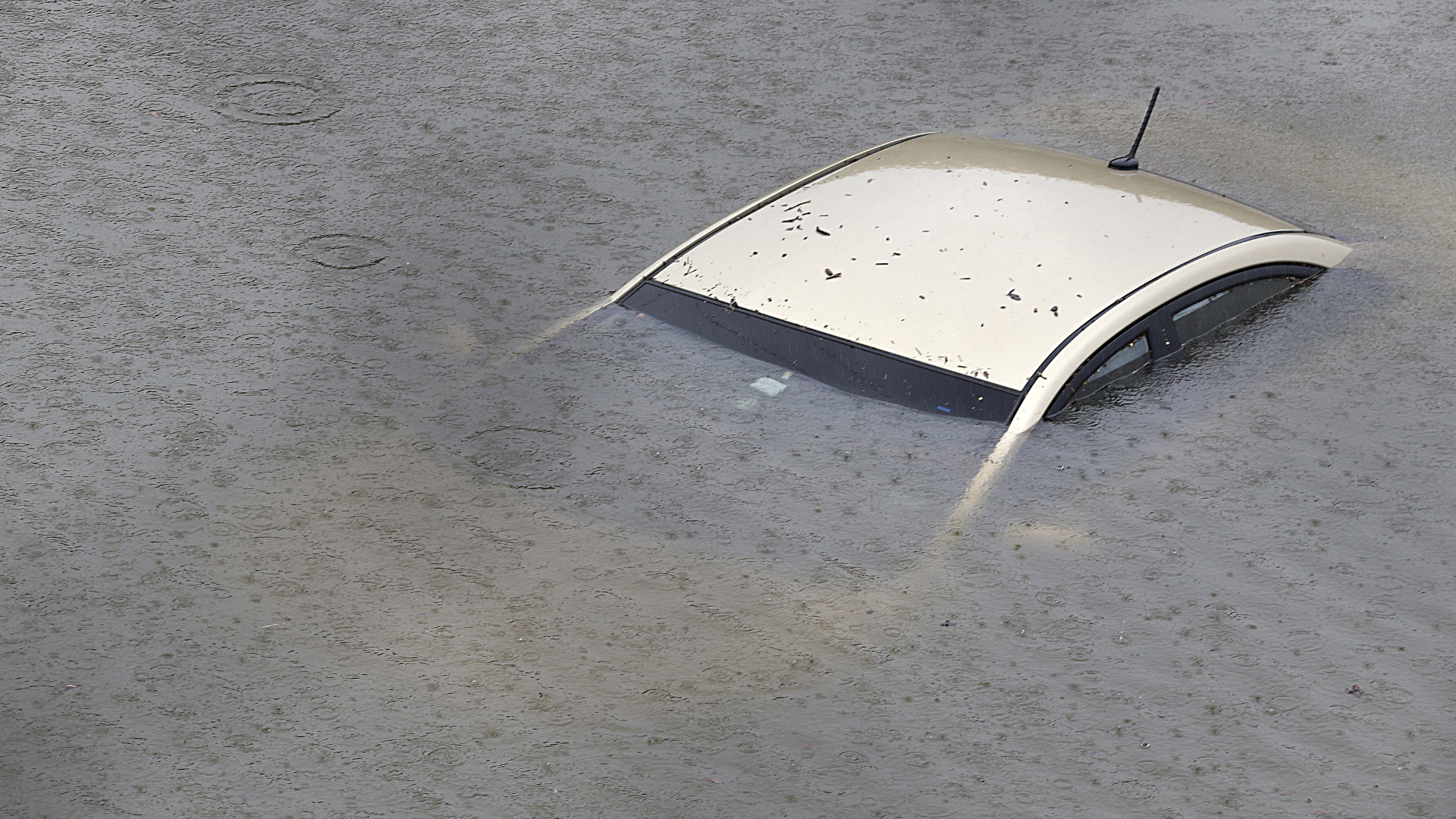

Hurricane Harvey—now a stubborn tropical storm—is already one of the most destructive storms in American history, swamping southeast Texas, flooding the nation’s fourth-largest city with trillions of gallons of water, and killing at least 14 people. And as the deluge in Houston continues, emergency officials want to remind everyone of a sobering statistic: More than half of all flood-related deaths occur in cars.
It might seem like common sense not to drive into floodwaters, but for someone faced with what appears to be a manageable crossing as they try to escape an affected area, it can look like a better option than turning around and trying to find another path. Reuters reports that rescue crews in Houston have already saved hundreds of people from submerged cars that either stalled out or were swept off the road.
And it doesn’t take much. According to FEMA, just six inches of flowing flood water can cause a driver to lose control, while a foot of water will easily carry away most smaller vehicles. Double that, and even the heavy-duty pickup trucks that are often pressed into rescue duty will be swept away. Water flowing at a deceptively calm 6 mph can exert the same pushing force as winds in an EF5 tornado. On top of that, it’s nearly impossible to gauge the water’s depth from the driver’s seat.

The bottom line is that there’s simply no safe way for someone in a normal passenger car to cross a flooded road, especially if the water is moving. And despite the repeated warnings, a CDC report on the aftermath of last year’s Hurricane Matthew found that 18 of the 23 drowning deaths (78 percent) caused by the storm in this country were “associated with a motor vehicle.”
The 30-plus inches of rain that has already fallen on the Houston area has made huge stretches of the city’s highways and streets impassible, local officials say.
So far, at least 14 people have died as a result of Harvey, including six family members who reportedly drowned when floodwaters swept their van into Greens Bayou in Houston. That number is sure to rise as the rain keeps falling and authorities continue to survey the region. If you’re in southeast Texas, please stay safe and remember: Turn Around, Don’t Drown. The advice could well save your life.